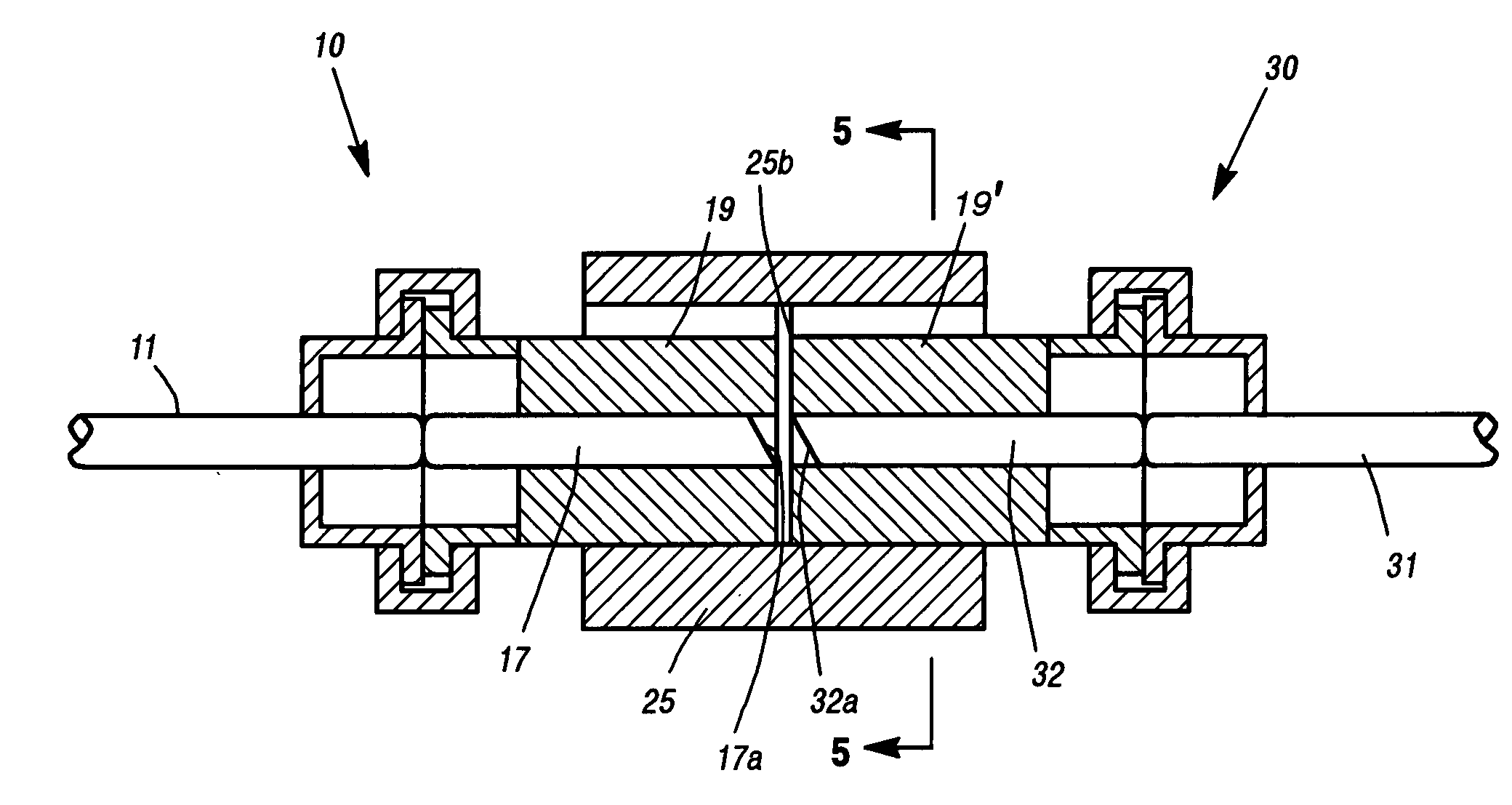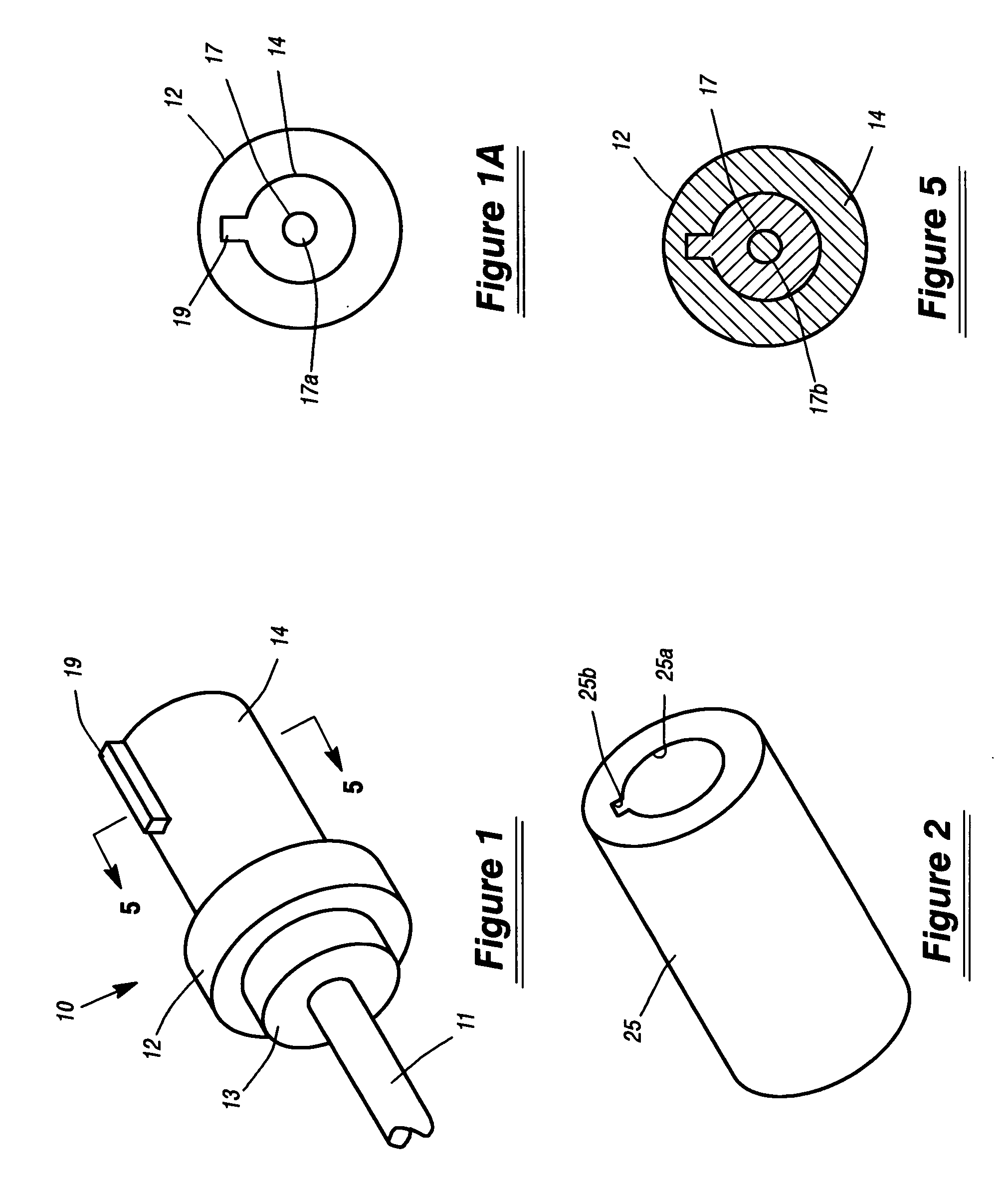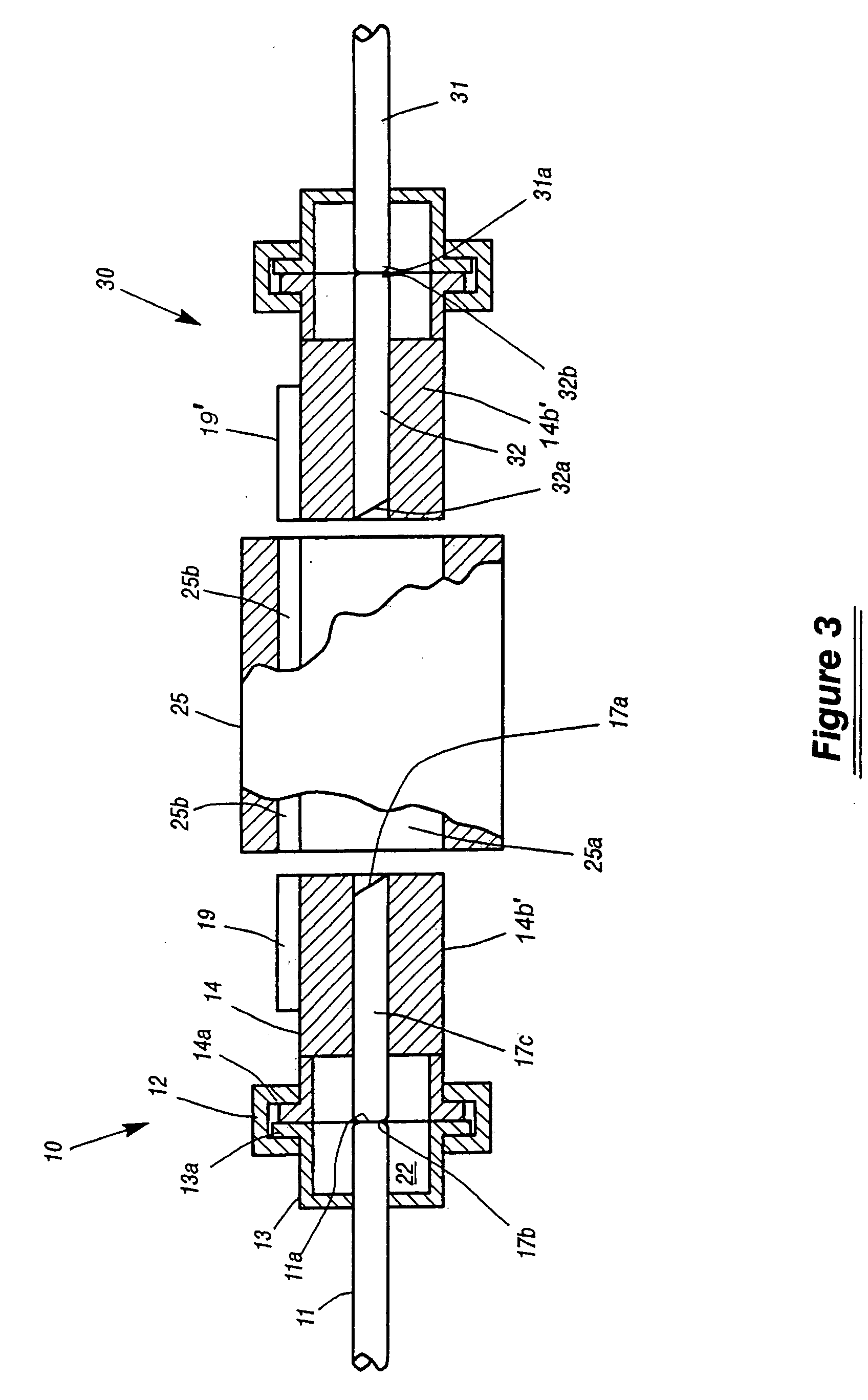Optical coupling
- Summary
- Abstract
- Description
- Claims
- Application Information
AI Technical Summary
Benefits of technology
Problems solved by technology
Method used
Image
Examples
Embodiment Construction
[0018] Referring to FIG. 1 and FIG. 3, reference numeral 10 identifies a three part rotatable coupling connector or rotateable coupler secured having one end secured to an optical lead or optical fiber 11. The rotatable coupler 10 includes a first flanged member 13 secured to the exterior surface of optical lead 11 and a second flanged member 14 located in a rotational relationship with respect to flanged member 13. Flanged members 13 and 14 are held in rotational engagement and alignment with each other by a U-shaped collar 12 that encompasses the flanges of members 13 and 14. A reference to FIG. 3 shows the flanges 13a and 14a of the flanged members 13 and 14 of coupling connector 10 held in rotational engagement by collar 12 to form a rotational joint.
[0019]FIG. 3 shows two identical rotateable couplers 10 and 30 in a condition for optically coupling optical fibers from two different sources. In the embodiment shown coupler 10 is shown in cross sectional view revealing flange 13...
PUM
 Login to View More
Login to View More Abstract
Description
Claims
Application Information
 Login to View More
Login to View More - R&D
- Intellectual Property
- Life Sciences
- Materials
- Tech Scout
- Unparalleled Data Quality
- Higher Quality Content
- 60% Fewer Hallucinations
Browse by: Latest US Patents, China's latest patents, Technical Efficacy Thesaurus, Application Domain, Technology Topic, Popular Technical Reports.
© 2025 PatSnap. All rights reserved.Legal|Privacy policy|Modern Slavery Act Transparency Statement|Sitemap|About US| Contact US: help@patsnap.com



